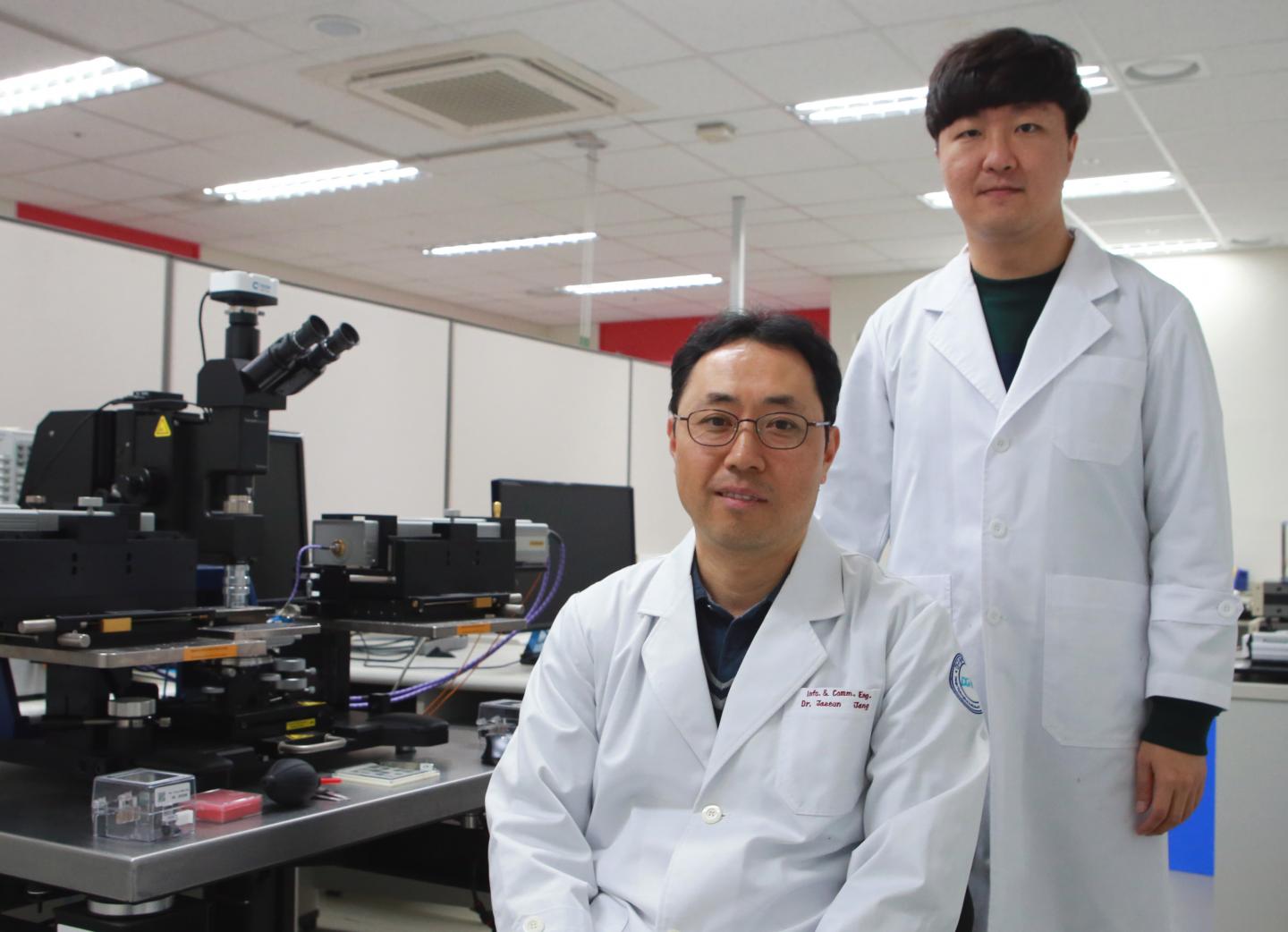
Credit: © DGIST
DGIST announced on Wednesday, February 20 that Professor Jae Eun Jang’s team in the Department of Information and Communication Engineering developed a biosensor that expresses biomaterials’ colors using nano structure and applies a new image signal processing technique.
Active R&D has been underway on clarifying relationship with a certain disease and outbreak mechanism through the analysis of biomaterials inside cells or organs. Since biomaterials such as protein are difficult to be observed and analyzed by naked eyes or optical microscopes because they are colorless and transparent within the range of visible rays, a different approach is taken to observe them after secondary processing using a biomarker to show a certain color on biomaterials.
However, development of new technology has been demanded to detect biomaterials without biomarker because biomarker technology may change the characteristics of biomaterials and some of them cannot be taken into biomarker processing.
Professor Jae Eun Jang’s team has conducted a biosensor research using the selective penetrability by the plasmonic nano structure, through a joint research with Professor Che Il Moon’s team in the Department of Brain & Cognitive Sciences and Professor Jae Youn Hwang’s team in the Department of Information and Communication Engineering.
The research team produced a plasmonic nanostructure where uniform nanoholes are regularly arrayed on a metal film. Like a color lens that selectively allows certain light to pass through if regular fine holes are drilled on a metal film, the property around a nano structure changes and the wavelength of selected light also changes, showing a different color. Different colors by substance show when various biomaterials are placed on a nanostructure, which can be seen by the naked eye or microscope.
The research team first obtained biomaterials using a simplified image sensor without an analyzer such as a spectrometer and analyzed biomaterial image data by pixels. They developed an image signal processing technique with high accuracy by proving that color sensitivity by biomaterial change is related to intervals of nano structure arrangement.
Using this technology, the research team successfully obtained the color information of nano structure by biomaterial change through an image sensor, and developed a biosensor that can precisely detect in real- time biomaterials by applying the newly developed signal processing technology.
The biosensor developed by the research team can analyze and detect biomaterials in real time without a secondary processing or analyzer, so it can be used widely in various bioresearch such as analysis of disease mechanism and new drug development. It can also easily be commercialized because it is applicable to the existing analysis method using a microscope.
Professor Jae Eun Jang in the Department of Information and Communication Engineering said “We have developed a core technology that can apply effectively on classifying and tracking essential biomaterials in bioresearch. We expect this to be used actively in brain disease research and treatment through the results of integrated research by nano engineering, electronic engineering, and brain science experts.”
###
This research result was published on February issue of ‘Biosensors & Bioelectronics IF=8.173,’ a world-renowned international journal in biosensor field.
Media Contact
[email protected]
[email protected]
Original Source
https:/
Related Journal Article
http://dx.




